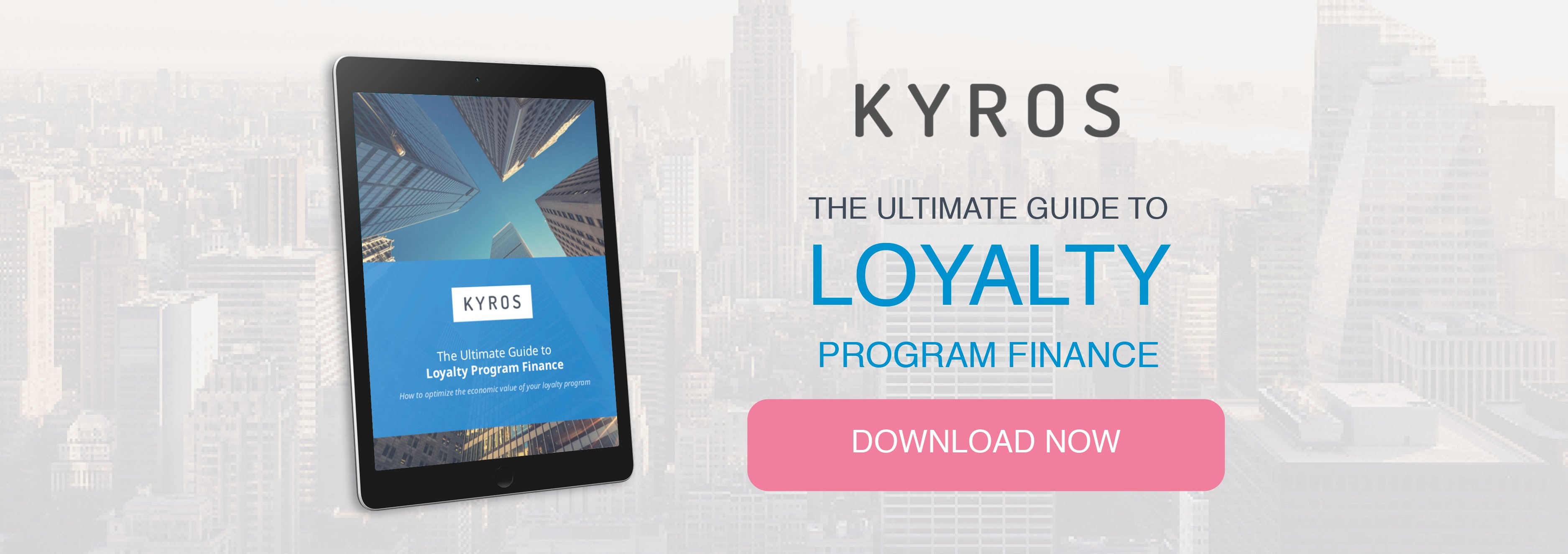Marketers are great at finding ways to drive customer engagement. They know how to use quantitative and qualitative data to uncover insights that drive desired behaviors. They empathize with the voice of the customer and are constantly thinking about optimizing the customer experience. Best of all, they use these skills to create effective campaigns and initiatives that drive customer engagement, build brands and grow businesses.
Ultimately, marketers hope that their efforts will not only enable a better customer experience, but help their company realize significant financial gains. One of the most effective ways they do this is through a customer loyalty program.
The struggle to achieve progress
Yet, the number one challenge I hear from marketers is how difficult it is to convince their CFO to invest in customer loyalty program initiatives. Finance usually asks very tough questions about these initiatives — questions that many marketers struggle to answer convincingly. Three of the most common questions include:
- What is the incremental lift?
- How big is the impact on customer lifetime value (CLV)?
- What will the impact be on short and long term financial statements?
However challenging these questions may be, they provide CFOs and other members of the finance team with critical information about the cost — and risk — associated with an ambitious marketing plan. So, how can you prepare yourself to answer these questions and see your customer loyalty program through? We take a closer look at the reasoning behind the questions.
Question #1: What is incremental lift?
Convincing a CFO to invest in customer loyalty starts with proving the incremental lift. That is, the CFO wants to know if the campaign will drive extra profit above and beyond the status quo without the campaign.
If this incremental lift is sufficiently large, then the company should invest.
In a perfect world, measuring incremental lift would be easy. You’d set up two identical scenarios. In one scenario you’d run the campaign, and in the other you’d keep the status quo (i.e., without the campaign). You’d then observe how each behaves over the long term.
The difference in profit between these two scenarios is your incremental lift. Quantifying the incremental profit over the long haul is essential when it comes to capturing the campaign’s total impact.
But convincing the CFO to invest in loyalty isn’t easy. And unfortunately, one can’t measure incremental lift with complete precision.
Predictive models can help measure incremental lift in a reasonably accurate and defensible way, however, and include some of the best tools available to help marketers get loyalty program buy in from key stakeholders.
Question #2: What is the impact on customer lifetime value?
In addition to knowing the incremental lift, convincing a CFO to invest in a loyalty program requires you to understand its impact on customer lifetime value.
Finance 101 teaches us that the value of a company is more or less equal to the sum of the stream of future profit from all its customers — and CLV is a critical metric that captures this information.
It stands to reason that any marketing campaign or strategy that improves customer lifetime value is a sound financial decision. While this may be true, it isn’t necessarily the rule, since companies still need to manage financial statements.
The difference between costs and revenue can further complicate the decision.
The challenge here is that determining CLV requires the ability to predict customer behavior over both the short and long term. This is very hard to do. Most companies, therefore, limit themselves to predictions over shorter time frames, such as a few months.
In doing so, these businesses limit the opportunities to see returns.
If companies were to see the bigger picture, they would find that there are numerous opportunities to see returns over the long term. Marketers can benefit greatly if you have a believable model that can make long term predictions. This makes convincing the CFO to invest in loyalty a little bit easier.
Question #3: What is the impact on short and long term financial statements?
There are also some practical considerations beyond customer lifetime value and incremental lift that are important when it comes to convincing the CFO to invest in loyalty.
All companies need to manage their financial statements, particularly publicly traded corporations. This is a marketplace reality that isn’t going to change any time soon — and it often creates short term financial pressure on companies that are expected to meet Wall Street’s numbers.
This makes it critical to set correct financial expectations.
The financial risk associated with loyalty programs is often underappreciated. Most people don’t realize that loyalty program liability is often one of the largest on the balance sheet.
It’s common for these liabilities to run anywhere from hundreds of millions of dollars to several billion dollars. Furthermore, even the smallest change in liability has the ability to cause significant financial impact.
So despite the best intentions, new marketing strategies, campaigns and initiatives make it difficult for the finance team, as these all include levels of uncertainty. This affects liability and expected future revenue, and makes it challenging for finance to set the right financial expectations.
To get buy in from your finance team, you need to give them confidence about the short and long term implications of your marketing initiatives on their financial statements.
They need to understand the methods used to make and monitor underlying assumptions as new data emerges to help them manage the expectations of their stakeholders. This is the key to convincing your CFO to invest in loyalty.
How to convince your CFO to invest in loyalty
Whether you’re trying to measure incremental lift, customer lifetime value or the impact of your loyalty program on financial statements, having data that predicts member behavior over time will be crucial to getting support from your finance team — including the CFO.
Predicting such behavior isn’t an easy task. But there are tools out there that can help. Predictive modeling solutions allow you to quickly answer finances’ questions, and have the data and key metrics you need on hand to prove the true value of your loyalty program — for customers and your company’s bottom line.





